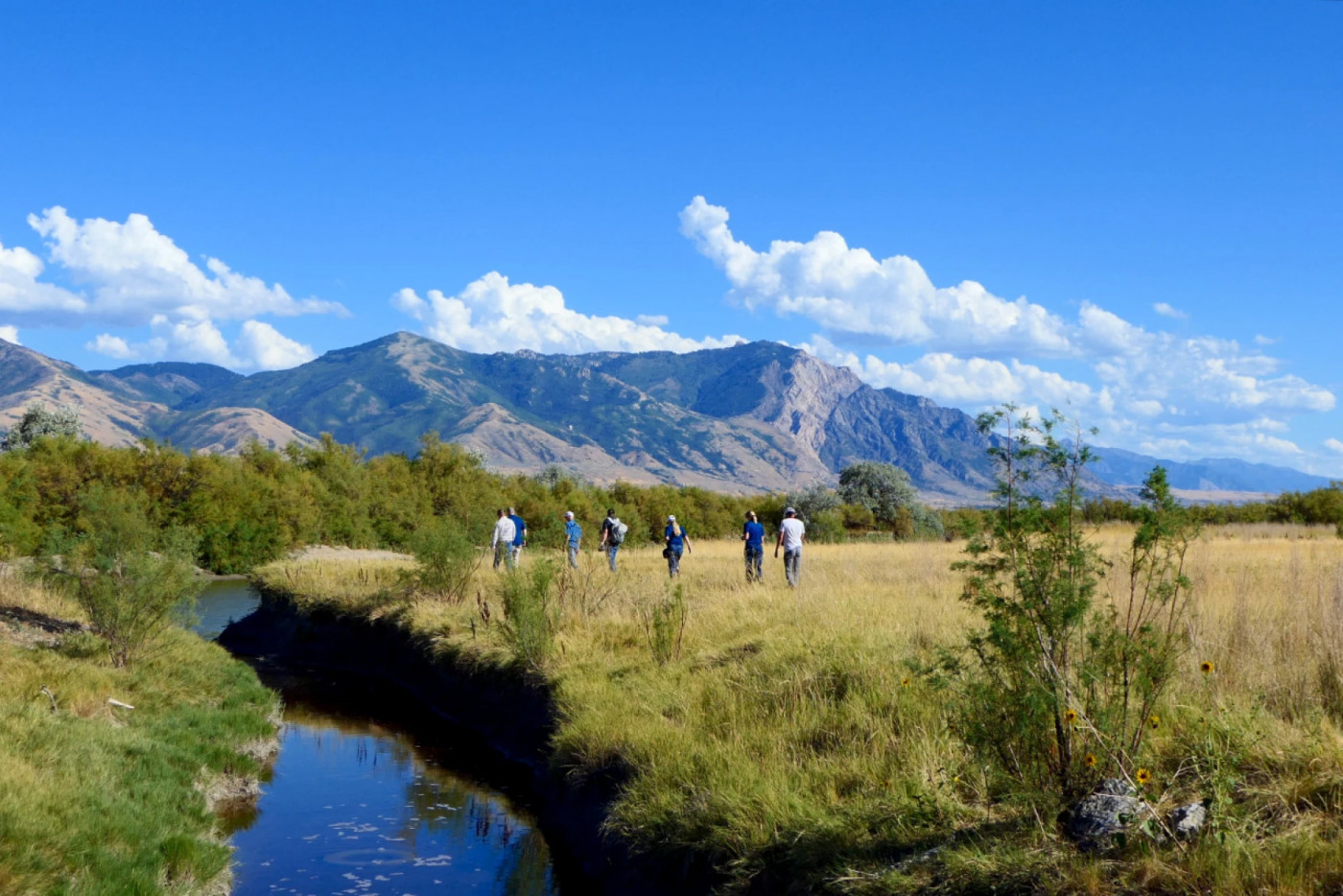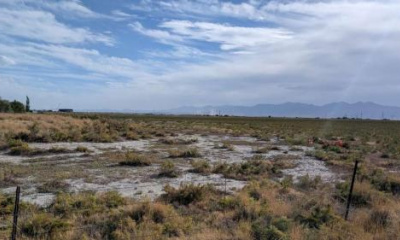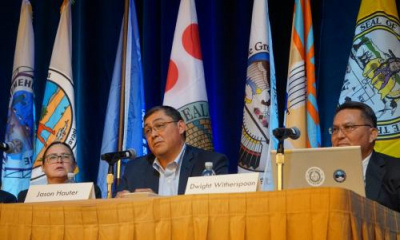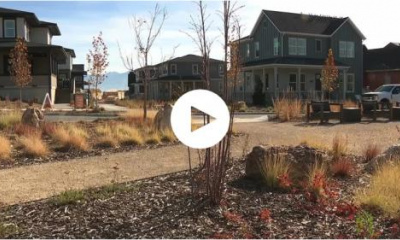Water conservation efforts across the state have increased over recent years. We visited a business, a farm, and a water district, all utilizing strategies that will save water and benefit Great Salt Lake.
Brian Steed, Great Salt Lake commissioner, told UPR that Great Salt Lake is in a much better spot than it was in 2022.
“We've had two great water years, and then we've had increased focus on conservation," Steed said. "Both those have had the effect of getting more water to the lake, which is really great news.”
Listen to the story here.
One business actively conserving water is Perennial Favorites in Ogden. It's a wholesale nursery that, according to founder and owner Preston Cox, has focused more on native plants in recent years.
“Now we're seeing a real uptake in designing with native species, or, you know, water wise species of plants and stuff like that," Cox said.
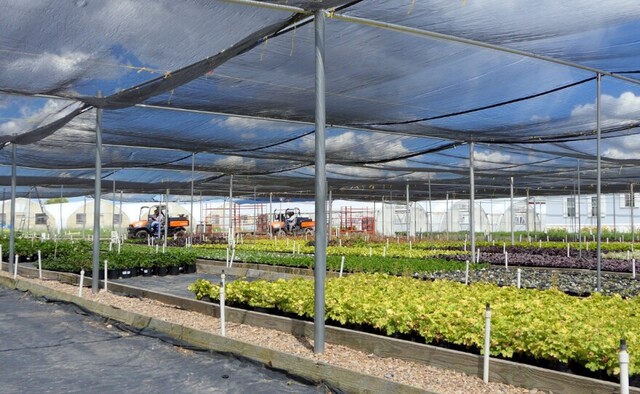
Perennial Favorites is a wholesale nursery in Ogden that grows over a thousand plants, focusing mostly on native landscaping. (Erin Lewis, UPR).
The company has also recently constructed a new water reclamation system in its daily operations. They noticed excess water sitting around that could potentially be reused, so they installed a concrete catch basin to collect their own water runoff from drains.
Preston Cox’s son Cort worked on implementing the new system.
"So when the water is at the high level, it says, turn the pump on," Cort Cox said. "It sucks that water from the catch basin, sends it through a filter system, because we have some debris, some soil, some leaves, whatever that might be. So it filters that stuff out, and then stores it black, holding tanks there.”
The Weber Basin Water Conservancy District is also making a big effort that is paying off for Great Salt Lake. Assistant General Manager Jon Parry said they are releasing water from Willard Bay that makes its way to Willard Spur and into the lake.
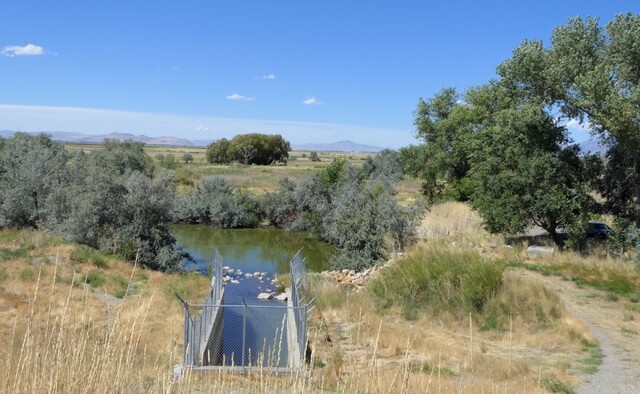
Water comes into Willard Spur from Willard Bay, making its way into the Bear River and then into Great Salt Lake. (Erin Lewis, UPR).
“Now, when we have good water years and we're doing flood control operations, we are releasing water every year out of this basin," Parry said. "So this past year, we released about 150,000 acre-feet of water through this outlet structure right here out into the Great Salt Lake.”
Release of water upstream has become a more common practice. North of Great Salt Lake, farmers are releasing excess water from operations into the Bear River.
Joel Ferry is the executive director of Utah's Department of Natural Resources, as well as a Box Elder County farmer.
Ferry opened a flood gate further, allowing more water to flow from his land into the Bear River. His farm is at the end of Bear River, so that excess water flows from his farm, through Bear River Migratory Bird Refuge and ultimately into Great Salt Lake. He said farmers in this area have implemented agricultural optimization practices, including piping ditches and leveling fields, across thousands of acres.
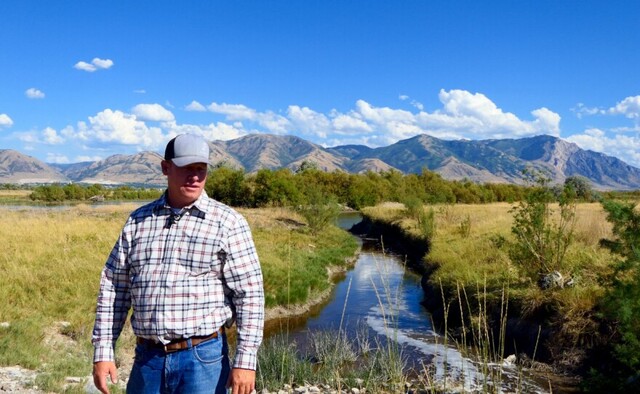
Joel Ferry stands on his farm in front of Bear River, speaking to the media about the work he is doing to release water back to Great Salt Lake. (Erin Lewis, UPR).
“Making sure that when we irrigate, it's being done efficiently. And what I've seen personally over the last 10 years, but most in particular, the last couple of years, as the state ag optimization program has been implemented, we've seen amazing, amazing results in water conservation and increased water coming down into these areas,” Ferry explained.
While Utah has faced increasing drought conditions in the past several decades, the past two years have really given the state respite in terms of water availability and there has been increased effort to conserve water across the state.

